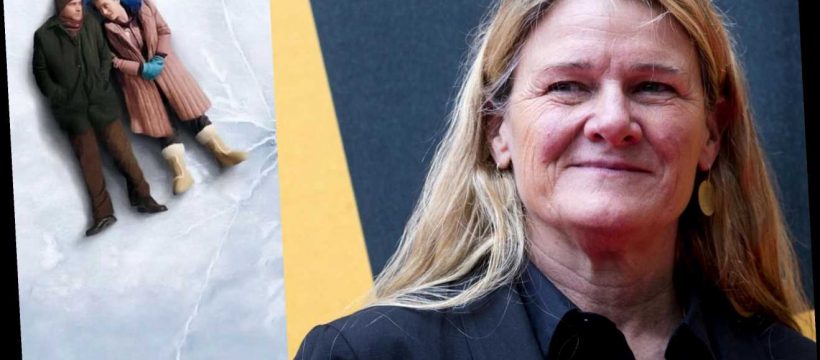In a world where only 18 (a number that’s doubled in the last seven years) of the 390 members of the American Society of Cinematographers are women, the trailblazing career of Ellen Kuras has long been a guiding light, but not simply because of the odds she overcame, but the work itself.
“Her work told me it was possible not just to be a female DP, because all that is is a gender, but she’s good at what she does,” said “Black Panther” cinematographer and devoted Kuras fan Rachel Morrison. “Her work really spoke to me and spoke to the masses, and I liked that the work wasn’t gendered.”
Kuras has given us cinematography as bold as the films she’s drawn to, and the directors (Spike Lee, Rebecca Miller, Michel Gondry, Martin Scorsese to name just a few) who are drawn to her. When we look back at what was best about independent films from the 1990s it’s often best represented by Kuras’ work — cinematically exciting, inventive, visceral. While the energy of her work was always electric, there is also something incredibly sculpted about her work regardless of budget.
“There’s a resourcefulness, she’s just one of those people always making lemonade,” said Morrison, who highlighted how inspirational it was to see what Kuras did with an early DV camera on Miller’s highly acclaimed “Personal Velocity.” For Miller that unique and diverse set of skills was what helped lift her first feature, “Angela.” “Ellen understood the spiritual needs of the film, as well as the technical needs,” said Miller. “We shot ‘Angela’ on 35mm, in an economical way, with moving masters, a style which Ellen was already very adept at. She had, and still has, a keen sense of visual poetry.
Popular on IndieWire
Morrison also singled out the scope of Kuras’ work with Lee, which epitomizes her flexibility. “Each story they told together was completely different from the one they did before, which is collaboration in its best form,” Morrison said. Yet like most Kuras-philes, the film Morrison points to as the pinnacle of her ingenuity is “Eternal Sunshine of the Spotless Mind”: “[It] broke every rule and did it with such elegance and poetry. It has a much bigger feel than what it actually was, with in-camera trickery that would now be done with a lot of effects.”
On “Eternal Sunshine,” the camera wizardry disguised the movie’s modest budget. Kuras’ cinematography is the glue holding together writer Charlie Kaufman’s narrative insanity and director Michel Gondry’s ephemeral visual poetry. The lighting serves as vital exposition — clearly delineating the different dimensions and supplying inventive transitions — which allows the complex science fiction device to melt into the background and the metaphysical poetry to rise to the top. In a film about the erasing of memories, the lighting itself has a fragility in its washed-out beauty that creates a visual texture. The result not only mirrors the film’s themes; it becomes the primary storytelling device.
Notably, Kuras’ filmography includes work at virtually every budget level — in addition to her various auteur-grade team-ups, she also shot studio projects such as “Analyze That,” “Blow,” and “The Mod Squad.” Kuras crossed over from documentaries to scripted narrative features with Tom Kalin’s 1992 Sundance breakout “Swoon,” but she’s returned to nonfiction a number of times since, shooting some of the defining nonfiction works of the last 30 years: “4 Little Girls,” “Dave Chappelle’s Block Party,” “Wormwood,” “Jane,” and “No Direction Home: Bob Dylan.”
Errol Morris, in discussing the unique and highly stylized multi-perspective interviews in “Wormwood,” credited Kuras’ engineering background (she graduated with an engineering degree) and how she figured out how to create a set up that somehow kept 10 cameras — shooting the interview from vastly different angles — and numerous lights out of frame, while also allowing for the flexibility to move two cameras in reaction to what was being said. It’s an anecdote that unlocks an incredible insight to Kuras: A cinematographer whose work can feel so raw, but underneath it there is an expertly drawn blueprint making it possible. You can see it at play in “Block Party,” recently recognized by Lincoln Center as part of its 100 year celebration of the ASC, because of how effortless Kuras made the impossible shooting circumstances of make-shift outdoor concert look easy.
To date, Morrison remains the only woman ever nominated for a Best Cinematography Oscar, though Kuras was nominated for Best Documentary after taking a detour to co-direct ”The Betrayal” in 2008, and the Gotham Awards saluted her entire oeuvre in 2006. Yet there’s no award that could fully encapsulate the career one of the greatest cinematographers working today, and has been for almost 30 years. Morrison summed it up best: “Ellen is a legend for just being a fucking working, badass female DP.”
Source: Read Full Article
